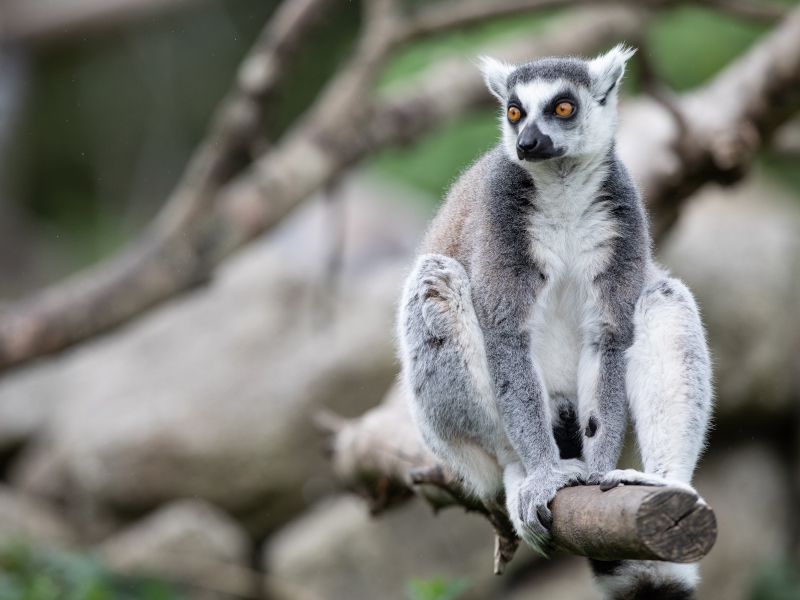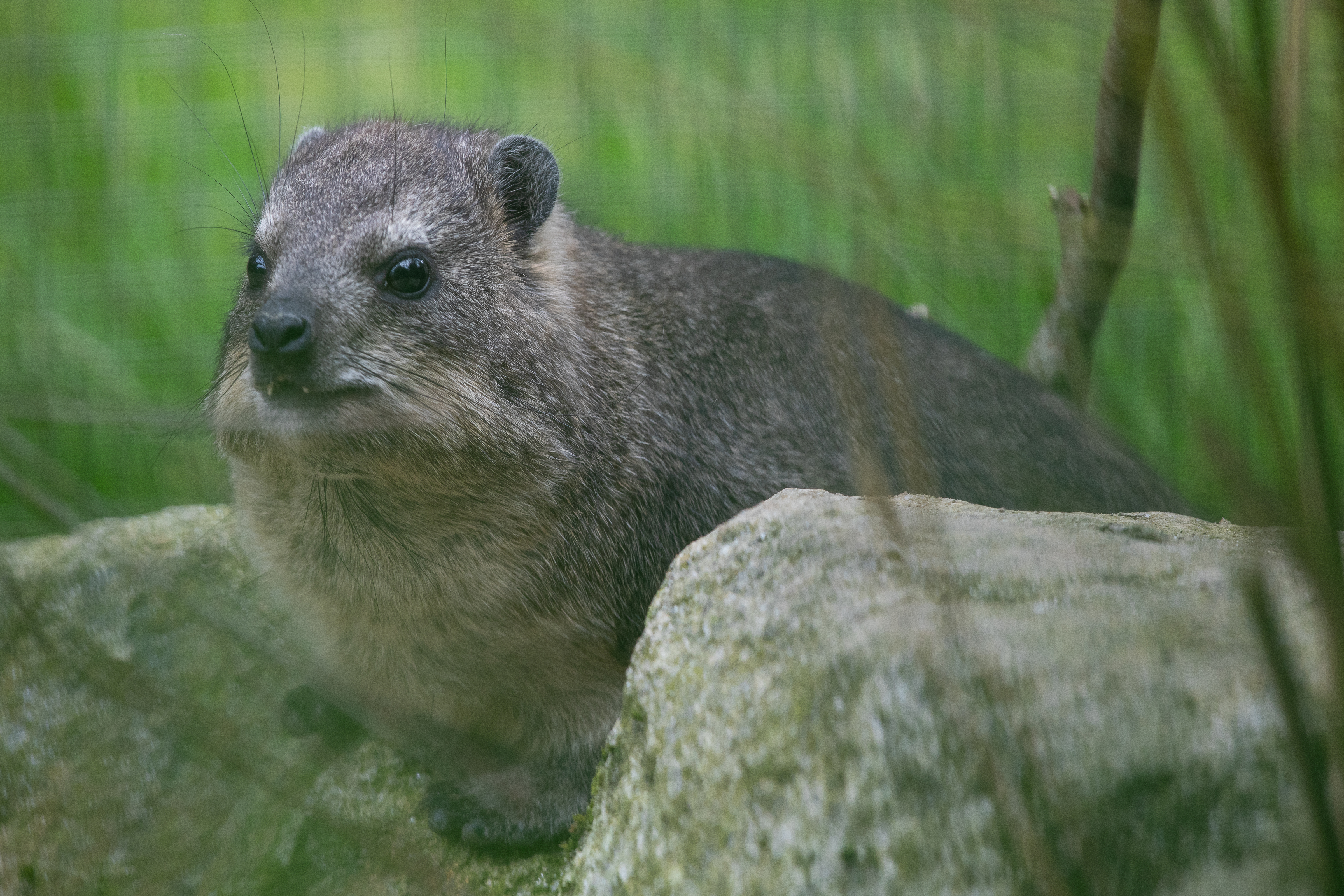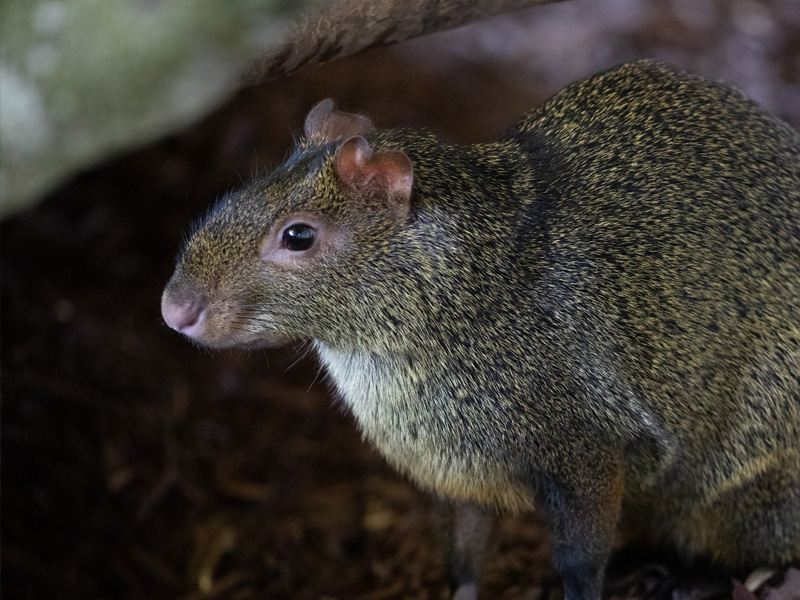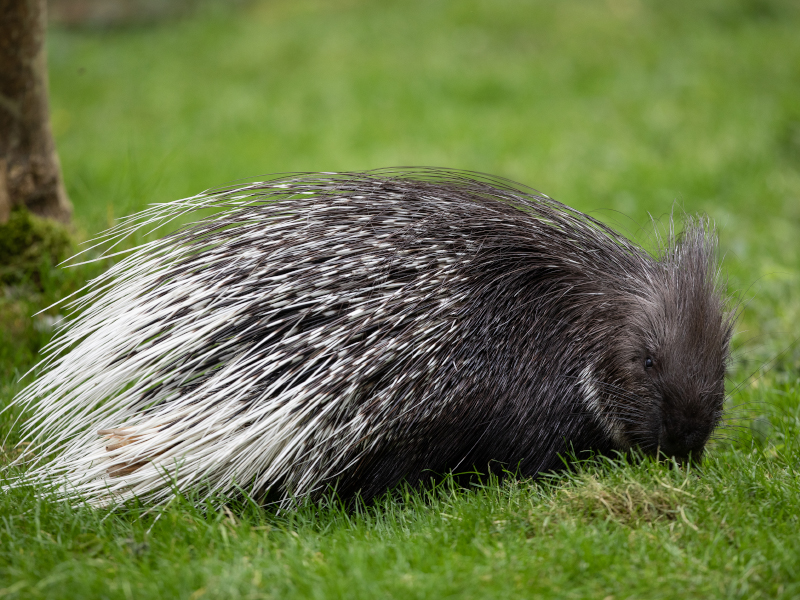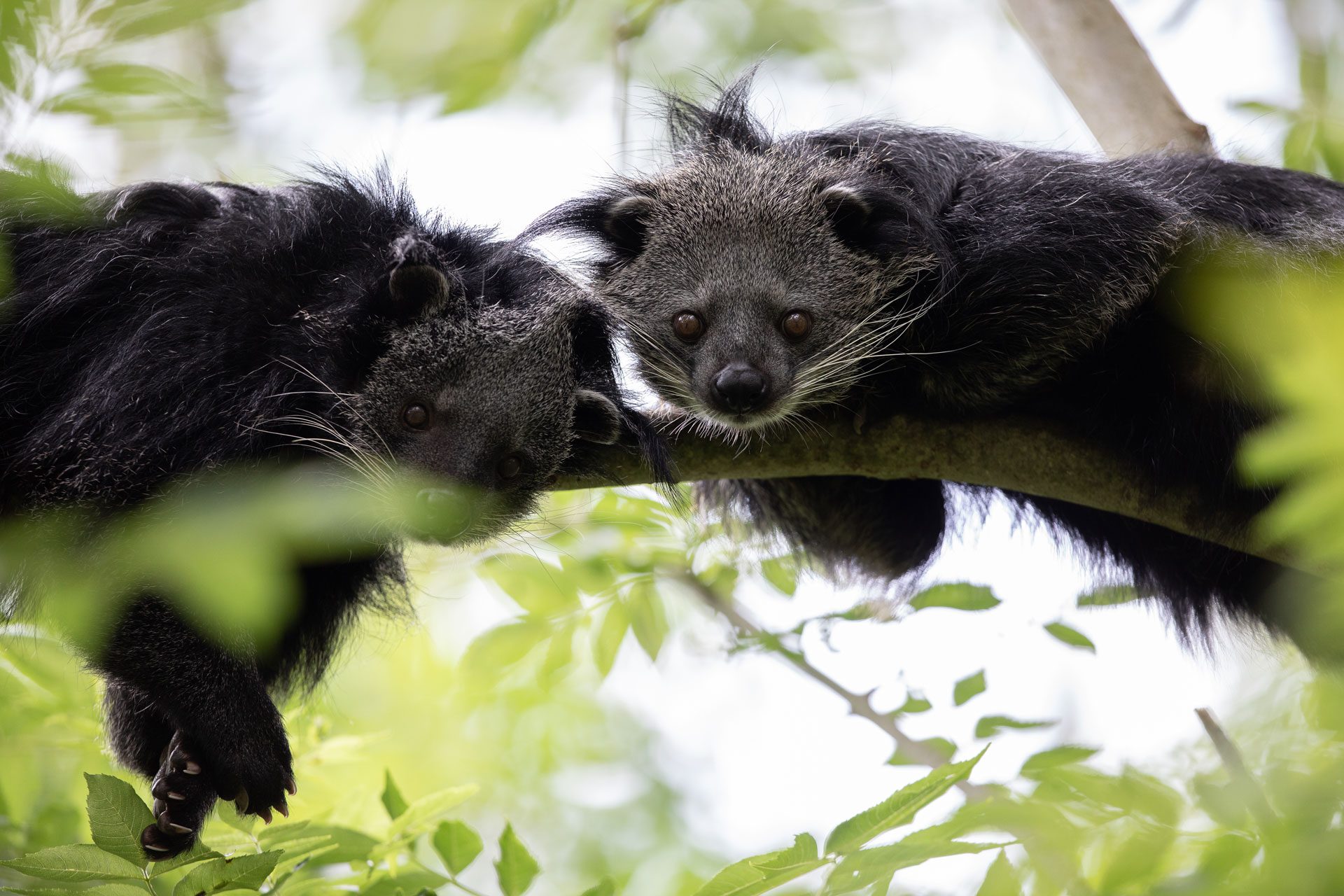Ring-tailed lemurs have 2 tongues, the second tongue called a ‘sublingua’.
Ring-tailed lemurs are part of a group of primates, known as prosimians, which share many characteristics with monkeys and apes, including grooming. The muscular sublingual aids in removing hair and debris from the ‘tooth comb’ that is used during grooming.
Ring-tailed lemurs are very social, living in groups of up to 25 individuals consisting of resident females, multiple males, and offspring. These groups are known as a “conspiracy”.
They get their name from the alternating black and white bands along their half-meter long, non-prehensile tail. Their tail is much longer than their head and body. They will keep their tails raised in the air to let other individuals know where they are while travelling throughout their home range, ensuring that the group stays together. They are skilled at climbing and can be found both on the ground and high up in trees. They have a wet nose and sensitive sense of smell.
Ring-tailed lemurs aid in the dispersal of seeds throughout by eating fruits.

Popular Searches

Ring-tailed lemur
-
Introduction
-
Conservation
Ring-tailed lemurs are classified as endangered.
Lemurs are the most endangered group of mammals in the world.
Their primary threat is habitat destruction. Since humans moved to Madagascar, some 2000 years ago, the country has lost about 80% of the total forest cover. This has occurred mainly due to extraction of hardwood for furniture and building as well as fuel wood and charcoal. Forest has also been cleared for agricultural and grazing land for domestic species.
Emerald Park conservation contribution:
EEP
Ring-tailed lemurs are part of the EAZA Ex-situ Programme (EEP). This means that their population is managed to ensure that there are heathy individuals within EAZA member zoos should there be the requirement of reintroductions, to the wild, in the future. -
Habitat
Ring-tailed lemurs are endemic to Madagascar where they can be found in high up in the tree canopy or on the forest floor.
-
Fun Facts
Females give birth to 1-2 young, and will be the sole carer of them, the males do very little when it comes to raising offspring. The young will ride on the backs of their mothers and stay very close while exploring their surroundings and learning how to forage.
Ring-tailed lemurs back legs are much longer than their front and they spend lots of time on the ground, with about 40% of their time walking quadruply (on all fours) along the forest floor.
A group of Ring-tailed lemurs is known as a ‘troop’ or a ‘conspiracy’.



